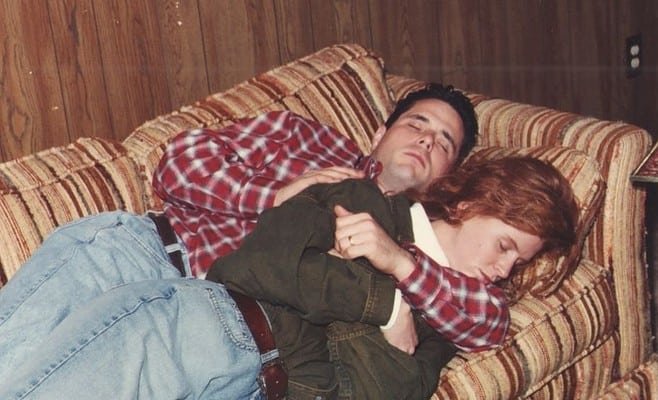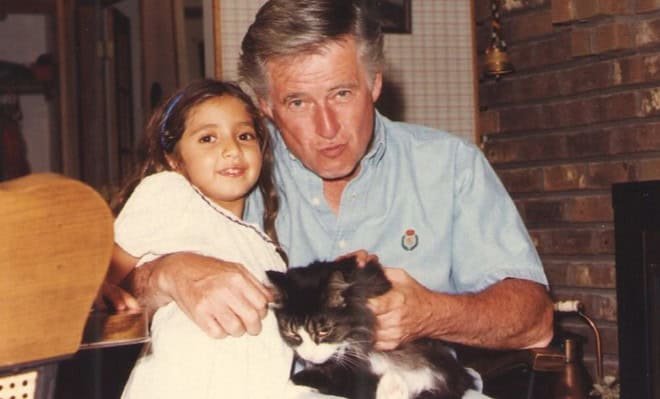Cerebral Palsy Awareness: Rolling Along Continuing To Create Change
Cerebral Palsy (CP) is considered to be a neurological, non-progressive brain injury that is caused while a child’s brain is still developing. It primarily affects body movement and muscle coordination, but it can also affect muscle tone, posture, and balance, as well as gross motor, and fine motor skills. The entry to the brain is most often caused before birth, during labor, or immediately after a child is born.
Cerebral palsy affects every person differently. The person with CP will most likely show signs of physical impairment, but the severity to which the body is affected varies from one individual to another. It can affect the arms, the legs, or even the face, and mouth. The way muscles contract is greatly impacted — they can contract too much, too little, or all at the same time causing tightness, or the muscles to be too flaccid, as well as causing weakness. The neural pathways of a person’s brain who has cerebral palsy do not fire in the same way as a fully able-bodied individual. There are nine different variations of cerebral palsy:
- Spastic Diplegia or Hemiplegia: Diplegia meaning that it affects two on two different sides of the body, hemiplegia means that it affects two limbs on the same side of the body. These are the two most common forms of cerebral palsy.
- Monoplegia: When one arm or leg is affected
- Quadriplegia: when both arms and legs are affected. Often times, the trunk and the muscles that control the mouth, tongue, and windpipe are affected as well.
- Triplegia: When three limbs are significantly affected
- Dyskinetic: When muscle tone in the body fluctuates between being too loose and too tight.
- Athetoid (Hyperkinetic): When the muscles in the body are too relaxed, or too limp.
- Dystonic: When the body and neck stay in a stiff position.
- Ataxic: this is the rarest form of cerebral palsy that involves the entire body. It causes irregular body movement in the trunk, arms, legs, and hands.

Photo Credit: Pexels
World Cerebral Palsy Day is observed on October 6th each year. It is a day to celebrate the 17 million people living with cerebral palsy. The project was launched in 2012 by the Cerebral Palsy Alliance (Australia) and United Cerebral Palsy (USA). These organizations help support numerous cerebral palsy organizations, universities, parent support groups, research initiatives, student groups, schools, and children’s hospitals.
The first World Cerebral Palsy Day took place in 2012. The campaign was called ‘Change My World in 1 Minute’. The project gathered ideas from individuals around the globe that had cerebral palsy and used these ideas as a basis to invent products that would be beneficial and had the potential to ‘change the world’ for people living with cerebral palsy.
It is vital to have opportunities to raise awareness so that people will have the opportunity to gain a better understanding. Although I have had cerebral palsy for my whole life, my relationship with having a disability, in general, has been a roller coaster ride.
At different points of our lives, it can be difficult to wrap your head around things that may be happening at the moment, is often not until later when you have the opportunity to step back and see things from a different perspective that you realize how certain circumstances have shaped you or make you grow. There are many different areas that I believe cerebral palsy has impacted me, here are a few that I believe are important to continue to raise awareness about.
It is so important to continue to raise public awareness about all disabilities. It is essential that as a society, we do not shy away from situations that we may not understand. Instead, we should embrace them and use that as an opportunity to create change. When I was 13 years old I was appointed to serve on the New Hampshire Statewide Independent Living Council whose mission is to identify and set priorities for independent living services and activities within the state of New Hampshire. Our primary focus was to:
- Critically examines the needs of individuals with disabilities.
- Develops the State Plan for Independent Living with the State Agency.
- Advocates for individuals with disabilities.
- Evaluates independent living programs in the state; and
- Produces educational materials.
In addition to performing these duties for the state of New Hampshire, we were also given opportunities to represent the state in larger capacities with other statewide Independent living Councils across the United States to raise awareness about accessibility, inclusion, and other disability-related issues. Never underestimate the power of one’s voice, or collective voices coming together to create change and be heard.
Taking Things for Granted
The struggle for civil and human rights is ongoing, even in societies where the most progress has been made. Many people with cerebral palsy and other disabilities lag well behind the ‘majority’.
I was fortunate to go to undergraduate and graduate school to receive my Master’s degree in Social Work. While I would not trade my education or any of the experiences that I had, I did not realize how difficult it would be for me to obtain gainful employment. There is a lot of discrimination that people with disabilities face in and around the workforce, and with there being certain questions employers are not able to ask the individuals that they are interviewing due to ethical reasons I believe that it can cause fear from the employers’ perspective.
If you receive Social Security as a person with a disability, you are not allowed to make more than a certain amount of money or your benefits including medical coverage can be compromised. For people who have physical disabilities and require the assistance of a personal care attendant, services may not be covered if an individual is not able to meet certain state-by-state criteria. I have moved to four different states, and each time I moved to a new state it is very difficult to obtain personal care attendant services.
Independence and feeling a sense of fulfillment is so important, especially when certain things are out of your control that other people may take for granted. I have been fortunate enough to live on my own for most of my adult life with varying degrees of assistance. It is challenging to relinquish control and be vulnerable in that way to another person. What makes it even more challenging is when you are not sure if your attendant is going to show up when they are scheduled, or even at all. Personal care attendant agencies have a very high turnover rate, in large part because the pay rate is so low and they are so understaffed.
I was so blessed to be able to volunteer for the AmeriCorps with an organization called Communities In Schools while I lived in Texas, and they were very understanding of my personal care attendant struggles. I was given the opportunity to use the tools and experiences I had learned throughout my education, and bring that with me as an AmeriCorps member. Being part of a team, and community gave me such a sense of fulfillment and passion.
I knew that my students were counting on me to be a consistent role model during my time with them. This often posed challenges due to my lack of personal care attendant coverage, especially in the morning. It got to the point where I decided to sleep in my wheelchair at night so that I would be up and ready for the day in the morning when no one was able to come and help me. I loved the work that I was doing, but what was probably the more motivating factor was the fact that I had never been given an opportunity such as this before despite working so hard for it.
It is important that people with disabilities are given the opportunity to demonstrate that they are qualified for positions, just as much as able-bodied individuals. There has been a great deal of work done to get to this point, but there is still so much ground to cover in order to achieve equality and accessibility for all. It is sometimes hard for people to realize the things that they may take for granted, such as employment, access to public transportation, or adequate housing accommodations.
Medical Challenges and Treatments
While cerebral palsy is not seen as a progressive disability, but there are many co-occurring diagnoses that can affect individuals throughout their life. As outlined above, there are eight different types of cerebral palsy, and they affect each individual differently. It is important to have a knowledgeable team of medical and other professionals in order to have the best plan of care possible. Muscle tightness and spasms are very common for people with cerebral palsy, so it is important to be as physically active as possible. This typically begins at a very young age with interventions such as physical and occupational therapy, as well as other therapeutic interventions
Physical therapy is often the first step in treating cerebral palsy. It can help improve motor skills and can prevent movement problems from getting worse over time. Physical therapy implements strength and flexibility exercises, coordination, posture, and testing adaptive equipment in order to promote increased independence.
Occupational therapy helps people develop or improve the skills needed to accomplish everyday activities. It can help with muscle and joint coordination issues — these are things that can make everyday tasks more difficult. Occupational therapy can help to improve physical, and cognitive, as well as motor skills, and posture.
Medical interventions may also be used to treat some of the effects of cerebral palsy. Botox is something that I have used to lessen spasms in my lower extremities. In the past, I have had hamstring and heel cord lengthening surgeries to help with muscle tightness as well. It is important to keep open lines of communication with your medical and support team so that you are all on the same page when it comes to what is the best course of action for you to take.
With these challenges comes many ups and downs, as I have gone through mine the only way that I can describe it for my own situation is that oftentimes I have two different thought processes that are fighting against each other, instead of working together. I often need to take a step back and find the path that works best for me. This can be extremely frustrating because unlike a lot of people, I have to think about in what ways will what I want to do affect others. I never want to be a burden on someone else, and that can be quite a heavy burden in itself to carry, but it is so important to just keep pushing through and continuing on the path to find the next opportunity to create change.
While some days are harder than others, I can certainly say that cerebral palsy has helped make me who I am. I have the opportunity to see the world from a different perspective. We all have our own challenges, and cerebral palsy has given me the opportunity to teach others what overcoming challenges look like. I have been given the tools to be more open-minded, compassionate, and knowledgeable to continue to learn and grow. One thing I would ask anyone is to keep an open mind, and do not be afraid to ask questions. The only way we can understand others is by continuing to communicate. It is wonderful to have Cerebral Palsy awareness month or any other platform to raise awareness about important issues. It is my hope that we move in a forward direction and come to a place where specific months or situations are not the only catalysts to raise awareness or have an open dialogue.










